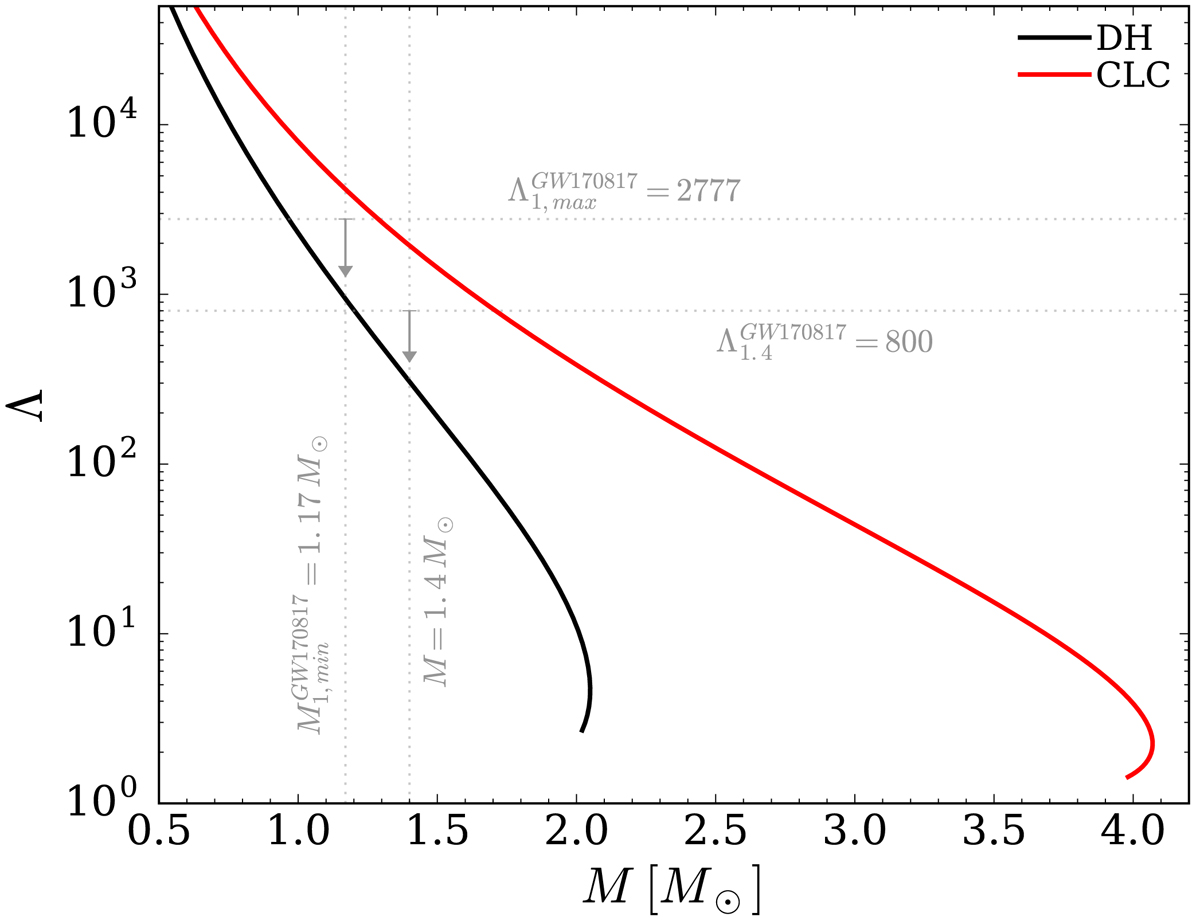Fig. 4.

Tidal deformability Λ as a function of mass for the CLC EOS (red) with the DH crust connected at ρu = ρ0 (results obtained with the CLCacc EOS are indistinguishable), and for the DH EOS (green). The bottom horizontal line corresponds to the limit on the deformability of a 1.4 M⊙ obtained from the observations of GW170817, the merger of two NSs: Λ ≤ 800. While the DH EOS is compatible with this observational constraint, the maximally stiff CLC EOS gives much higher values of Λ for M = 1.4 M⊙. The top horizontal line corresponds to the tidal deformability in the case in which one of the components of the GW170817 merger was a black hole (or a very compact self-bound star) with vanishing deformability. This limiting Λ1,max = 2777 was computed from the observational bound on ![]() (Eq. (10)) for marginal values of the component masses, M1 = 1.17 M⊙ (assumed NS, Λ ≠ 0) and M2 = 1.6 M⊙ (assumed BH, Λ ≡ 0) in the high-spin prior estimation case (see Table 1 in Abbott et al. 2017b for details).
(Eq. (10)) for marginal values of the component masses, M1 = 1.17 M⊙ (assumed NS, Λ ≠ 0) and M2 = 1.6 M⊙ (assumed BH, Λ ≡ 0) in the high-spin prior estimation case (see Table 1 in Abbott et al. 2017b for details).
Current usage metrics show cumulative count of Article Views (full-text article views including HTML views, PDF and ePub downloads, according to the available data) and Abstracts Views on Vision4Press platform.
Data correspond to usage on the plateform after 2015. The current usage metrics is available 48-96 hours after online publication and is updated daily on week days.
Initial download of the metrics may take a while.


